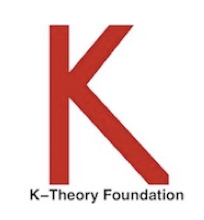Polylogarithms, homology of linear groups, and Steinberg modules
SRS
Algebraic K-theory is one of the central and ubiquitous objects of modern mathematics. It plays an important role in such diverse fields as number theory, geometry, and mathematical physics. One characteristic feature of it is that, more often than not, algebraic K-theory is immensely hard to describe explicitly. A variety of conjectures have been proposed in this direction, including those of Suslin, Goncharov, and Rognes. These conjectures are based either on connections to polylogarithms - certain special functions appearing in number theory (special values of zeta functions), mathematical physics (scattering amplitudes), and geometry (volumes of hyperbolic polytopes) - or to homology groups of linear groups - algebro-topological invariants of groups of matrices.
The goal of this workshop is to discuss recent progress in several long standing conjectures about algebraic K-theory, homology of linear groups, and polylogarithms, and connections between these. A key role in this progress is played by the properties of the Steinberg modules of a field, such as their Koszulity. In addition to cutting-edge research talks on these topics, this workshop will feature several lecture courses that serve to explain these recent results and relate them to each other as well as more classical results.
This conference is supported by the K-Theory Foundation.

The workshop will feature research talks as well as four minicourses by:
- Clément Dupont (IMAG)
- Jeremy Miller (Purdue Univesity)
- Danylo Radchenko (University of Lille)
- Oscar Randal-Williams (Cambridge University)
